- Clone
- 3A6 (See other available formats)
- Regulatory Status
- RUO
- Workshop
- HCDM listed
- Other Names
- CD6 ligand, Activated Leukocyte Cell Adhesion Molecule (ALCAM)
- Isotype
- Mouse IgG1, κ
- Barcode Sequence
- CATAAGATTCCGAGC
- Ave. Rating
- Submit a Review
- Product Citations
- publications
| Cat # | Size | Price | Quantity Check Availability | Save | ||
|---|---|---|---|---|---|---|
| 343915 | 10 µg | 296€ | ||||
CD166, also known as the CD6 ligand or the Activated Leukocyte Cell Adhesion Molecule (ALCAM), is a 100-105 kD transmembrane glycoprotein. It belongs to the Ig superfamily of proteins and expressed on activated T cells, activated monocytes, epithelial cells, fibroblasts, and neurons. CD166 plays an important role in mediating adhesion interactions between thymic epithelial cells and CD6+ cells during intrathymic T cell development. Recently CD166 has also been used as a potential cancer stem cell marker. The antibody reacts with human activated leukocyte cell adhesion molecule (ALCAM).
Product DetailsProduct Details
- Verified Reactivity
- Human
- Reported Reactivity
- African Green, Baboon, Cynomolgus, Rhesus
- Antibody Type
- Monoclonal
- Host Species
- Mouse
- Immunogen
- Cultured human thymic epithelial cells
- Formulation
- Phosphate-buffered solution, pH 7.2, containing 0.09% sodium azide and EDTA
- Preparation
- The antibody was purified by chromatography and conjugated with TotalSeq™-D oligomer under optimal conditions.
- Concentration
- 0.5 mg/mL
- Storage & Handling
- The antibody solution should be stored undiluted between 2°C and 8°C. Do not freeze.
- Application
-
PG - Quality tested
- Recommended Usage
-
Each lot of this antibody is quality control tested by immunofluorescent staining with flow cytometric analysis and the oligomer sequence is confirmed by sequencing. TotalSeq™-D antibodies are compatible with Mission Bio’s Tapestri Single-Cell Sequencing Platform for simultaneous detection of DNA and Protein.
To maximize performance, it is strongly recommended that the reagent be titrated for each application, and that you centrifuge the antibody dilution before adding to the cells at 14,000xg at 2 - 8°C for 10 minutes. Carefully pipette out the liquid avoiding the bottom of the tube and add to the cell suspension. For Proteogenomics analysis, the suggested starting amount of this reagent for titration is ≤ 1.0 µg per million cells in 100 µL volume. Refer to the corresponding TotalSeq™ protocol for specific staining instructions.
Buyer is solely responsible for determining whether Buyer has all intellectual property rights that are necessary for Buyer's intended uses of the BioLegend TotalSeq™ products. For example, for any technology platform Buyer uses with TotalSeq™, it is Buyer's sole responsibility to determine whether it has all necessary third party intellectual property rights to use that platform and TotalSeq™ with that platform. - Application Notes
-
Additional reported applications (for the relevant formats) include: immunohistochemical staining of paraffin-embedded tissue sections and immunofluorescence.1
- Additional Product Notes
-
TotalSeq™-D reagents are designed to profile protein expression at single cell level. The Mission Bio Tapestri platform and sequencer (e.g. Illumina analyzers) are required. Please contact technical support for more information, or visit biolegend.com/totalseq/single-cell-dna
The barcode flanking sequences are CGAGATGACTACGCTACTCATGG (PCR handle), and GAGCCGATCTAGTATCTCAGT*C*G (capture sequence). * indicates a phosphorothioated bond, to prevent nuclease degradation.
View more applications data for this product in our Application Technical Notes. - Application References
-
- Pretzel D, et al. 2011. Arthritis Res. Ther. 13:R64. (IHC, IF, FC)
- RRID
-
AB_2894541 (BioLegend Cat. No. 343915)
Antigen Details
- Structure
- A type I transmembrane glycoprotein belonging to the Ig superfamily of proteins.
- Distribution
-
CD166 is expressed on activated T cells, activated monocytes, epithelial cells, fibroblasts, and neurons.
- Function
- Play an important role in mediating adhesion interactions between thymic epithelial cells and CD6+ cells during intrathymic T cell development.
- Ligand/Receptor
- CD6
- Cell Type
- Epithelial cells, Fibroblasts, Mesenchymal Stem Cells, Monocytes, Neurons, T cells
- Biology Area
- Immunology, Stem Cells
- Molecular Family
- Adhesion Molecules, CD Molecules
- Antigen References
-
1. Aruffo A, et al. 1997. Immunol Today. 18(10):498
2. Patel DD, et al. 1995. J. Exp. Med. 181:2213
3. Bowen MA, et al. 1995. J. Exp. Med. 181:1563
4. Horst D, et al. 2009. Cancer Invest. 22:1 - Gene ID
- 214 View all products for this Gene ID
- UniProt
- View information about CD166 on UniProt.org
Related FAQs
Other Formats
View All CD166 Reagents Request Custom Conjugation| Description | Clone | Applications |
|---|---|---|
| Purified anti-human CD166 | 3A6 | FC,IHC-P,ICC |
| PE anti-human CD166 | 3A6 | FC |
| APC/Fire™ 750 anti-human CD166 | 3A6 | FC |
| PE/Cyanine7 anti-human CD166 | 3A6 | FC |
| PerCP/Cyanine5.5 anti-human CD166 | 3A6 | FC |
| APC anti-human CD166 | 3A6 | FC |
| TotalSeq™-A1015 anti-human CD166 | 3A6 | PG |
| TotalSeq™-D1015 anti-human CD166 Antibody | 3A6 | PG |
| TotalSeq™-C1015 anti-human CD166 | 3A6 | PG |
| TotalSeq™-B1015 anti-human CD166 | 3A6 | PG |
| Brilliant Violet 421™ anti-human CD166 | 3A6 | FC |
| KIRAVIA Blue 520™ anti-human CD166 | 3A6 | FC |
| PE/Dazzle™ 594 anti-human CD166 | 3A6 | FC |
| Brilliant Violet 785™ anti-human CD166 | 3A6 | FC |
| Alexa Fluor® 647 anti-human CD166 | 3A6 | FC |
Compare Data Across All Formats
This data display is provided for general comparisons between formats.
Your actual data may vary due to variations in samples, target cells, instruments and their settings, staining conditions, and other factors.
If you need assistance with selecting the best format contact our expert technical support team.
-
Purified anti-human CD166
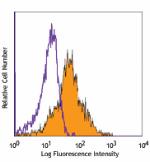
PHA-stimulated human peripheral blood lymphocytes (3 days) s... 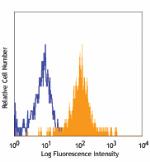
Human peripheral blood monocytes stained with purified 3A6 c... -
PE anti-human CD166

PHA-stimulated human peripheral blood lymphocytes (3 days) s... 
Human peripheral blood monocytes stained with 3A6 PE -
APC/Fire™ 750 anti-human CD166

PHA-stimulated (3 day) human peripheral blood lymphocytes we... -
PE/Cyanine7 anti-human CD166
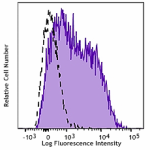
PHA-stimulated (3 day) human peripheral blood lymphocytes we... -
PerCP/Cyanine5.5 anti-human CD166

PHA-stimulated (3 day) human peripheral blood lymphocytes we... -
APC anti-human CD166
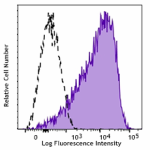
PHA-stimulated (3 day) human peripheral blood lymphocytes we... -
TotalSeq™-A1015 anti-human CD166
-
TotalSeq™-D1015 anti-human CD166 Antibody
-
TotalSeq™-C1015 anti-human CD166
-
TotalSeq™-B1015 anti-human CD166
-
Brilliant Violet 421™ anti-human CD166
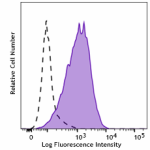
PHA-stimulated (3 day) human peripheral blood lymphocytes we... -
KIRAVIA Blue 520™ anti-human CD166
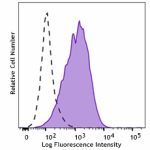
PHA-stimulated (3 day) human peripheral blood lymphocytes we... -
PE/Dazzle™ 594 anti-human CD166
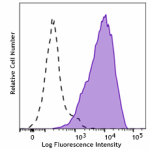
PHA-stimulated (3 day) human peripheral blood lymphocytes we... -
Brilliant Violet 785™ anti-human CD166
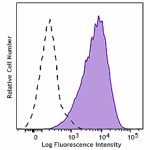
PHA-stimulated (3 day) human peripheral blood lymphocytes we... -
Alexa Fluor® 647 anti-human CD166

PHA-stimulated (3 day) human peripheral blood lymphocytes we...
 Login / Register
Login / Register 













Follow Us